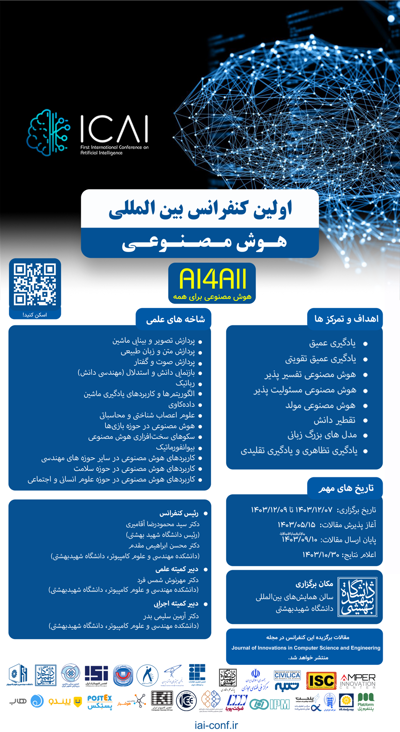0% Complete

نویسندگان :
کلمات کلیدی :
چکیده :
لیست مقالات بایگانی شده
Jaber Alavi - Mahmood Neshati
Atefe Aghaei - Mohsen Ebrahimi Moghaddam
Maryam Moradi - Sima Emadi
Fatemeh Fadaei Ardestani - Nima Asadi
Maryam Tamimi - Hamid Mahdavi
Sahar Farazi - Yasser Shekofteh
Mahdi Rajaeian - Shadi Chegini
Kiana Karimifard - Mohammad Ghasemzadeh
Sajedeh Farahbod - Masoud Tohidfar
Zahra Lotfi foroushani

